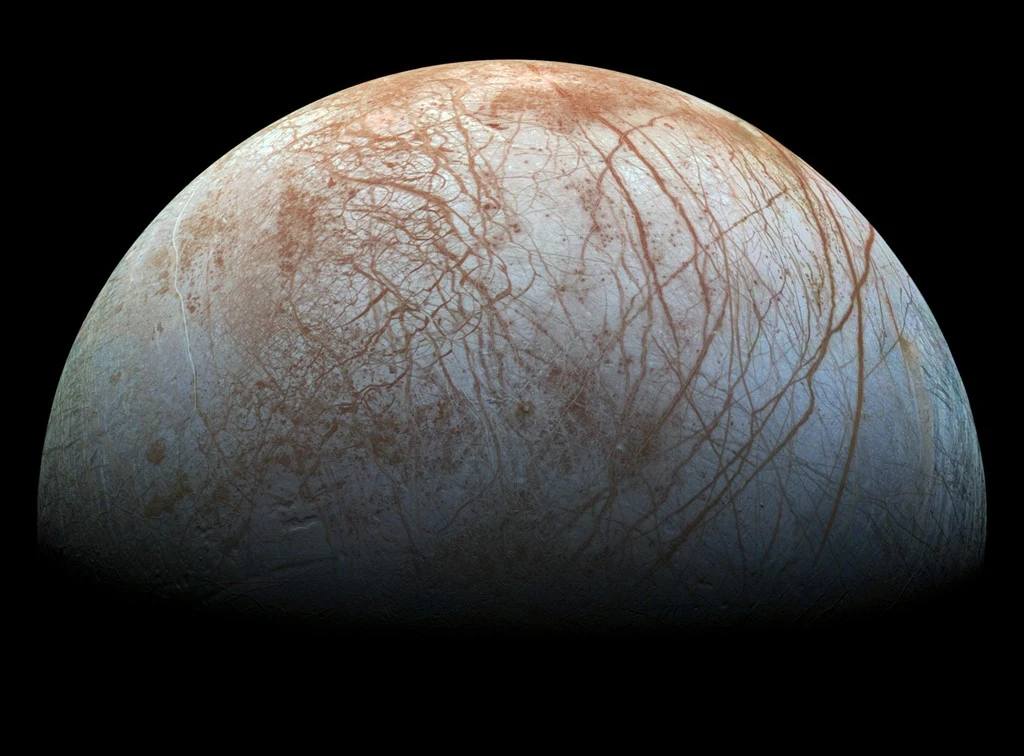All three moons will be studied by the Mission, but Girish Linganna notes that Ganymede will receive special attention because it is the largest moon in our solar system, larger than Pluto and Mercury, and the only one that is capable of producing its own magnetic field.

At 12.15 UTC (5.45 pm IST), the European Space Agency (ESA) will launch the Jupiter Icy Moons Explorer (JUICE) Mission from its spaceport in Kourou, French Guiana, using an Ariane 5 rocket and utilising Earth and Venus gravity assistance.
After an eight-year journey, the JUICE spacecraft will arrive at Jupiter in 2031. Three of Jupiter’s Galilean moons, notably Ganymede, Europa, and Callisto, will be thoroughly investigated by the satellite, which will also have the goal of exploring them.
Juice was developed in accordance with ESA criteria by a consortium of businesses led by Airbus Defence and Space, which is responsible for the Airbus group’s defence and space-related products.
Only two previous spacecraft have studied Jupiter: Juno, which has been orbiting the planet since 2016, and the Galileo probe, which orbited the planet from 1995 to 2003. However, NASA’s Europa Clipper will already be exploring Jupiter when Juice arrives there. In order to particularly explore the Europa moon, the Europa Clipper is scheduled to launch in October of this year and is anticipated to reach Jupiter in 2030.
All three moons will be studied by the Mission, but Ganymede will receive special focus because it is the largest moon in our solar system, larger than Pluto and Mercury, and the only one that can generate its own magnetic field. The Juice satellite will be equipped with ten advanced instruments in total, including the most potent remote-sensing, geophysical, and in situ payloads yet launched beyond Mars.
These instruments include, among others:
A radio system made up of the Ka transponder (KaT), Ultrastable Oscillator (USO), and High Accuracy Accelerometer (HAA), known as 3GM (Gravity & Geophysics of Jupiter and Galilean Moons). The experiment will investigate the gravity field at Ganymede, the size of the interior oceans on the frozen moons, and the composition of Jupiter’s and its moons’ neutral atmosphere and ionosphere.
GALA (Ganymede Laser Altimeter): It will investigate Ganymede’s tidal deformation and the topography of the frozen moons’ surfaces.
JANUS: An optical camera system that, in addition to charting Jupiter’s clouds, will examine global, regional, and local structures and processes on the moon. On Ganymede, it will have a spatial resolution of up to 2.4 m, whereas Jupiter will have one of roughly 10 km.
It is outfitted with instruments to characterise the Jovian magnetic field, its interaction with Ganymede’s magnetic field, and to research the subsurface oceans of the frozen moons. J-MAG (The JUICE magnetometer).
The Moons and Jupiter Imaging Spectrometer, or MAJIS, will study Jupiter’s clouds, atmospheric components, and the composition of the icy moons’ surfaces.
PEP (Particle Environment Package) is a collection of instruments used to assess the Jupiter system’s plasma environment.
Ice-penetrating radar called RIME (Radar for Icy Moon Exploration) is used to explore the subsurface structure of icy moons down to a depth of about 9 km.
Using a variety of sensors and probes, RPWI (Radio and Plasma Wave Investigation) will describe the radio emission and plasma environment of Jupiter and its ice moons.
SWI (Sub-millimeter Wave Instrument): Will look into the exospheres and surfaces of the frozen moons as well as the temperature structure, composition, and dynamics of Jupiter’s atmosphere.
UVS (UV Imaging Spectrograph): It will characterise the make-up and dynamics of the exospheres of the icy moons, analyse the make-up and structure of the planet’s upper atmosphere, and study the Jovian aurorae.
Additionally, NASA will supply a few supporting systems for two additional instruments:
Specifically, the Particle Environment Package (PEP).
The RIME experiment: Radar for Icy Moon Exploration
For its Juice mission, NASA will also donate an ultraviolet spectrograph (UVS).
Juice is incapable of recognising the presence of life. Its primary goal is to find any probable sites among Jupiter’s frozen moons that may have the materials necessary to host life, such as water, vital biological components, energy, and stability.
If there is life on these moons, it most likely exists in the water, which is difficult to access, according to Adam Masters, a senior lecturer in space and atmospheric physics at Imperial College, London, and a member of the team responsible for developing one of the scientific tools for Juice. This is due to the fact that it is now impractical to delve deeply beneath the ice layer, where life may be present.